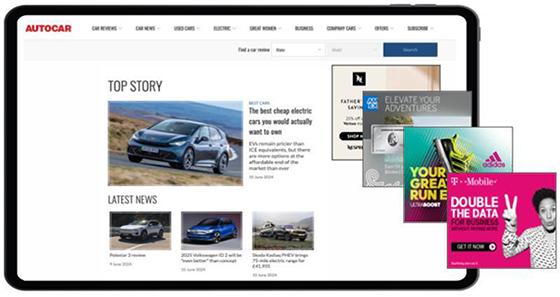
Duration Media, founded in 2018, launched technology
for publishers that can dramatically lower carbon emissions by reducing the number of bid requests on one impression.
“We emit more carbon than the airline business, and most comes from
the data waste from duplicate bid requests when auctions occur,” said Duration Media Founder Andy Batkin. “Jounce Media estimates there are 135 bid requests for each of the trillions of
auctions that occur.”
Sequency, a product that publishers place in their ad server, takes about five minutes to implement through a creative template. It can measure the pixels and
duration in time an ad is in view. The technology pings the Google Ad Manager (GAM) to confirm in real time that the ad is in view, and then sends a message to the supply side platform to execute a
viewable green private marketplace (PMP).
advertisement
advertisement
It lets the ad buyer know they are bidding on a viewable impression that only has one bid request. This cuts the carbon from an ad placement by
reducing 135 bid requests to one.
Batkin equated the problem to a Sotheby’s auction where multiple buyers raise their hand to offer the highest bid. Multiple bid requests in the
digital ad industry began because of programmatic advertising, many industry insiders argue. The tools used before the bid have punished the publishers, making them the bad participants in the
process.
Data centers that are powered by fossil fuel-based energy sources run massive amounts of these bid requests. If companies can reduce bid requests and data transfers, the industry can
lower the amount of electricity to power data centers and reduce their carbon footprints.
“Let’s say Coca-Cola says to the publisher I want 10 million impressions, but I want you
to bonus me 2 million impressions and I want them all to be viewable,” he said. “GAM can decide they can use the viewable impressions that are curated for them to fill the
impressions.”
Companies like Scope3 and Impact Plus can help buyers curate the sites before the bid occurs, but Sequency is an after-bid product. The first impression delivered to the
page has already been bid on, and Duration Media can determine if that ad is still in view, which lets the publisher curate incremental inventory and deliver to the marketplace only viewable carbon
efficient impressions.
The platform launched about three months ago. Several publishers have been testing it.
“The measurement of the carbon is really what will make this
industry move forward just like the early days of viewability,” he said. “More brands will require agencies to use solutions that reduce carbon from the ecosystem. They will need to
measure and report without fear of greenwashing. States like California are requiring companies to report carbon emissions.”
It will become a big part of the key performance indicators
(KPIs) companies have. The digital media business is a major contributor to carbon because of the electricity it burns to support cloud services, for starters. The amount of server to run artificial
intelligence servers are not helping to request carbon emissions. Brands demand that agencies develop a solution.